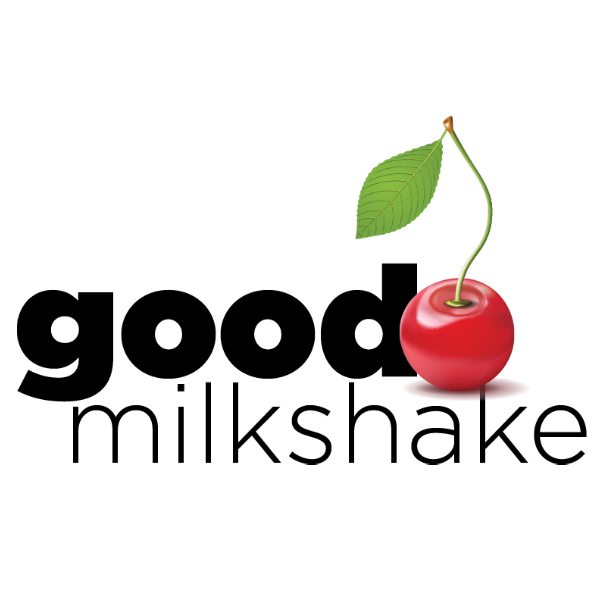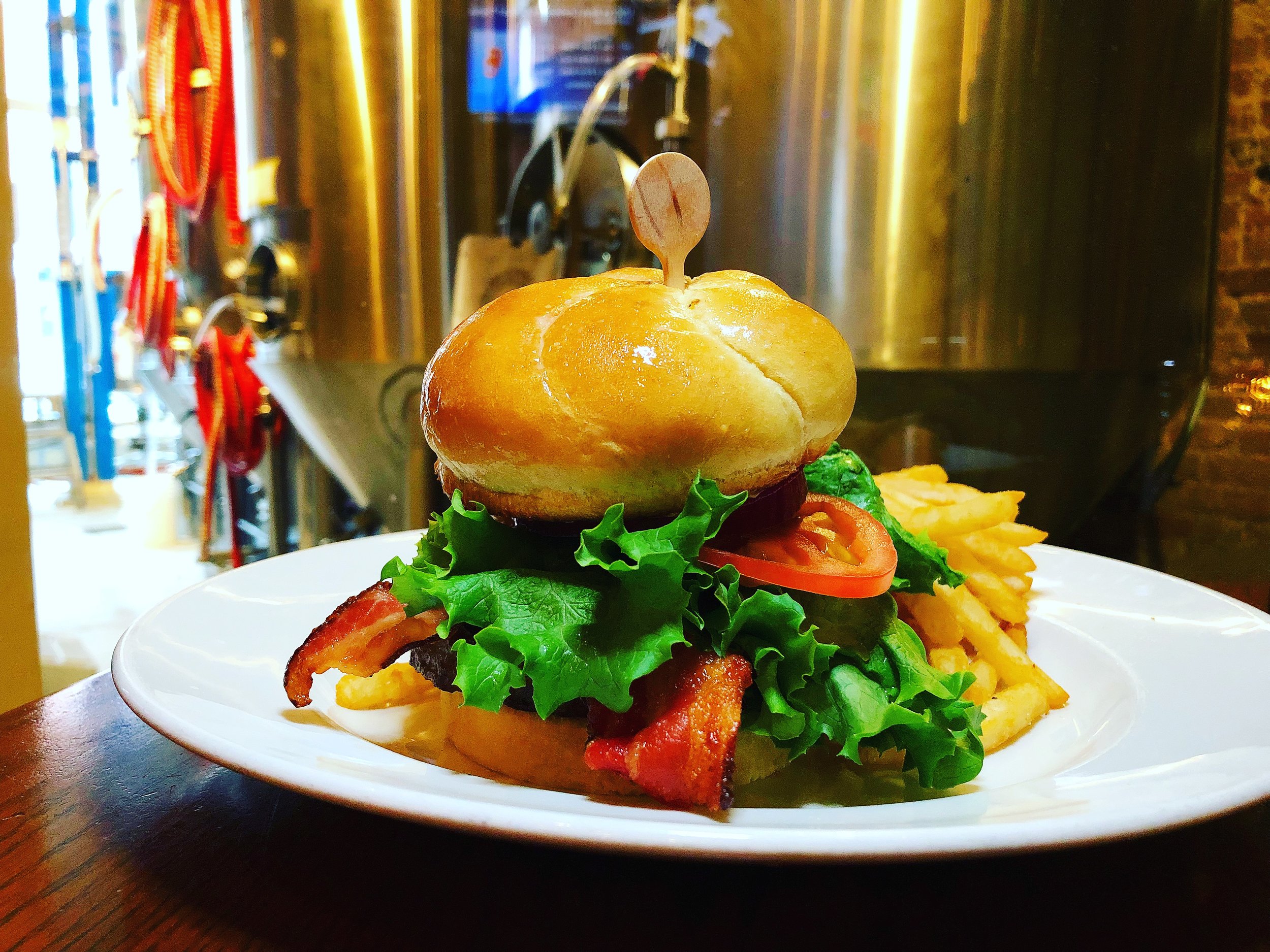(Mars Cafe was opened in March of 2016 by a couple wide eyed James boys and their super supportive spouses)
Step 1 through 101. Quit praying for rain.
If you’ve been following along with my content, you’ve probably noticed that one of my favorite strategies for getting a steady stream of sales for restaurant owners is to load them up with private events. There are a couple reasons I focus on this so heavily, but it all stems back to my time as the co-owner of Mars Cafe.
__
March 1, 2006 was cold-ish. I remember the steam coming off my face as I opened the doors at 5:00am and giving my brother Larry a high five. We were open. And then… crickets. If you own a restaurant, you know this game. You're praying for rain, waiting for the customers to come to you.
__
If you’re from the Des Moines area, you probably know all about Mars. It’s the edgy little coffee shop with the Cosmonaut theme that’s been slinging lattes in the Drake Neighborhood since 2006. My brother Larry and I opened it with the blessing of our wives. It was hard. But we hustled enough to keep the doors open.
(After a year of doing that, Larry and I decided that we would rather be brothers than business partners. Good choice... because I love that dude! Neither of us own it anymore, but it’s still around! They’ve even opened up a couple other satellite locations across town and are doing quite well.)
So I have a bit of experience doing the restaurant/coffee shop game. 26 years and change in one capacity or another as a matter of fact.
It ain’t easy.
You’re dealing with all sorts of stuff. Inventory, staffing, training, politics, theft, customer service, equipment maintenance…
There’s the time the dishwasher conked out in the middle of the shift.
Then there’s the time two staff members called in sick and you had to staff the cash register and the espresso machine at the same time.
Or the time your wife went into labor in the middle of an afternoon rush.
And then there’s the good stuff. Like all the cool kids from the local university that you met that you’re still friends with.
Or the vibes of being your own boss that’s created something extraordinary.
Or the staff person you helped with rent when times were tough.
But the bad stuff is just the price of doing business, right? You take the good for the bad. But mostly good. And while there are a million other things you could do with your money, you learn those lessons and carry on. So I learned a few extra lessons here and there both as a restaurant owner and someone who’s worked with 27 restaurant venues.
So what have I learned? Here are a few of the most important lessons I learned as a restaurant/coffee shop owner and a my years since as a restaurant marketing professional.
Don’t pray for rain. People in the food industry “pray for rain.” What I mean is, that most people who open the door in the morning don’t have much they can rely on for sales. They can’t count on anything. A couple reservations, no big ticket sales on the docket for the next year ahead. They’re not roofing contractors who have 11 jobs lined up for the summer.
As such, restaurant owners have to pray that people stop by and spend money.
Good luck there, chief.
You’re at the beck and call of all sorts of excuses. The weather sucks. The economy is bad. The customers are cheap. Blah, blah blah. Stop the excuses. So do whatever you can to lock in as much business as possible to your reservation system. Use every means necessary to push people toward getting reservations.
That cheeseburger ain't gonna pay for that beach house.
Small ticket items don’t pay the bills.
Ask any restaurateur who sells both steaks and burgers which they’d rather sell more of. Would they rather sell more burgers, or more steaks?
Let’s say a “high end” burger and fries costs $11. If they were awesome at controlling costs, that might cost them after labor and food costs about $5.
Now let’s take a premium cut of steak tenderloin and baked potato they’re selling for $42. After food and labor and operations costs, they’re out $21 in costs.
The burger earns a net gain of $6, but a margin of about 45%.
The steak earns a net gain of $17, but a margin of around 36%.
Now, of course in the aggregate, that owner would love to do 3 quick turnarounds of that burger table and profit $17 off the higher margin item of the burger. At scale, you’d much rather have the higher margins. But a high end restaurant isn’t doing that sort of turnover of tables.
They’d much rather keep the higher food costs and net a higher profit per table, right? Cash in hand, right? As one of my clients recently told me, “High margins don’t pay the bills. Cash does.”
Labor and inventory costs are so much higher without the “sure thing” locked up.
This means that there’s no way to guarantee you’re going to keep staff around for full shifts and happy with the pay they’re making without being able to guarantee huge amounts of customers. So this takes either enormous marketing costs, or a higher volume of “on demand” services. Both of these things are volatile because there’s no way to meet these demands on your terms. So you’re stuck with inventory that can either spoil, or just sit around, and your best staff unhappy and constantly on the lookout for a better paying gig.
Marketing costs go through the roof without a steady stream of income.
Duh. Good one there, smarty. But hear me out for a second.
People are looking to pay for a monsoon once a month instead of focusing on a couple springtime showers per week. This means that you’re going to have to pay for that one way or the other, either through paid media (digital or traditional), or spending an extraordinary amount of time creating content to get noticed.
That’s not to say that you shouldn’t be spending huge amounts of time and money creating content and pushing people to your restaurant with paid ads. You absolutely should. What I’m saying is that you shouldn’t rely on marketing as a hail mary.
So I pay attention to the sure thing. I would rather not have to pay or pray for rain. I want that stuff to fall down on my terms. So you need to do three things right away to bring in sales.
1. Reservations. Create a steady stream of “on demand” sales.
If you’re a restaurant with a track record and you’re able to project sales on a consistent basis, congratulations. But beware of this mindset as well, because there are always people out there trying to put you out of business. (If you’re a coffee shop or smaller sale type of place such as a sandwich shop or diner, you’re not going to have this issue. Though you could solve this for the most part by creating an online ordering service, or giving someone an incentive to call-ahead their order.)
2. Promote the snot out of loyalty programs and gift cards.
I’ll approach this in a future blog post, but keeping loyalty programs in place for restaurants can be a huge boon for the average restaurant. The reason being is that most restaurants are kept in business by their top 50-100 regular customers. Increasing the amount of loyalty involved in a business can only help the a restaurant retain current customers. If you’re awesome, and I know you are, you’d even be able to tie these loyalty programs back to an email marketing and direct mail campaign using the data the customers gave to you.
Back in the day when I owned Mars, we used punch cards. These were fine, but didn’t solve the real problem of loyalty programs, which was giving people an incentive system to use them on a regular basis. Much of the loyalty programs these days give people an incentive to use these cards on a weekly or monthly basis to take advantage of a special offer. By using data to your advantage, you can have a loyalty program that works to increase the number of regular customers that visit you on a weekly basis.
Private Events for Restaurants: The best way to ensure a restaurant is profitable long-term
3. Shift a significant chunk of your restaurant's marketing dollars and time toward Private events and large parties.
By this point, you’ve probably figured out my game. I beat this one to death. I’m in love with private parties for restaurants for many of the reasons already mentioned. Imagine a restaurant owner having the ability to guarantee 20% of their annual sales. With a little planning, you can do just that.
Create a system for long term sales that you can look forward to on the books. It sounds easier to do than most would care to admit. Clearly, it’s no picnic to create private events. Lots of staff, big food orders, dealing with difficult clients. All of this takes a lot of effort. But the bottom line is, if you want to create a steady stream of income for your business, you need private events.
The margin for a private event might be lower than that of a cheeseburger, but the sales involved is exactly the formula you need to take your restaurant to the next level of profitability.
In the next few posts, I’m going to discuss methods for people to increase private event sales with both online and offline methods, how to make loyalty programs effective and some best practices for running ads for reservations.




